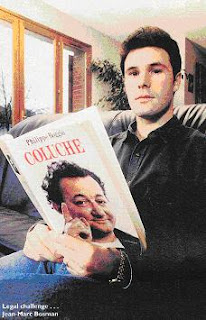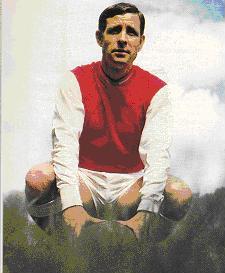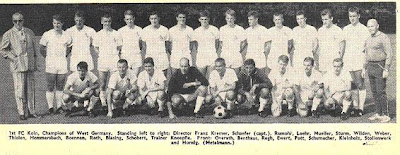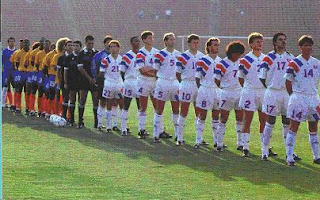Did Bosman weaken the Serie A?
Up until the summer of 1996, Italy’s Serie A was the strongest League on the planet. Italian clubs had monopoly on the best foreign players that money could buy. Short of Real Madrid and Barcelona of Spain, no team from other Leagues could compete to acquire the best.
England’s EPL was still in its early stages and not the financial force that it is now, while Germany’s Bundesliga and France’s Premiere Division were no match.
Italian clubs were regularly winning Europe’s top Clubs Competitions.
The seven sisters, as they were called (Juventus, AC Milan, Internazionale, AS Roma, Lazio, Parma and Fiorentina), were the desired destinations of most foreign stars.
However, this monopoly started to slowly crumble with the landmark Bosman Ruling of late 1995 and early 1996.
The Bosman Ruling, in addition to mandating free transfers at the term of a contract, also did away with foreign player restrictions.
This enabled all European Community member nations’ players to freely play in other member nations.
 |
Photo From: World Soccer, April 1995
(the Belgian player Jean-Marc Bosman responsible for the landmark case bearing his name) |
In that first summer (1996), all clubs across Europe made a frenzy of signings.
The top spenders were predictably Italy and Spain, as well as England.
Barcelona and Real Madrid tried to build (buy) super teams by bringing in the likes of Ronaldo, Blanc, Seedorf, Suker, Mijatovic, Illgner, etc.
 |
Photo From: World Soccer, December 1996
(Ronaldo, one of Barcelona’s new signings for the first post-Bosman season) |
English teams were not far behind. The growing global interest for the EPL enabled them to purchase the quality of players who otherwise, would have considered the EPL beneath them.
These included Latin players such as Italians, Brazilians and Argentines attracted by the financial and commercial incentives.
These included superstars like Gianluca Vialli, Gianfranco Zola, Juninho and Faustino Asprilla among others.
A team like Chelsea was too able to rise up from mid-table mediocrity by making efficient foreign signings as well as appointing Dutchman Ruud Gullit as manager.
 |
Photo From: World Soccer, August 1995
(Ruud Gullit with Chelsea Manager Glenn Hoddle, Gullit was one of the first top name players to leave Italy for the EPL) |
In fact foreign managers were almost unheard of in England in pre-Bosman days, but it became a popular trend. French Managers Arsene Wenger (at Arsenal) and Gerard Houllier (at Liverpool) brought with them new ideas and approaches to improve and innovate coaching, scouting and training in England.
While Italian clubs also started buying big, notably Moratti’s Internazionale, it was becoming more apparent that they would now have to compete with other Leagues to buy the best.
In addition, they were now even in danger of losing local talent to other Leagues.
It was unheard of, in the pre-Bosman days, for an Italian leaving the Serie A to play in another country. But now stars such as Zola, Ravanelli, Casiraghi, Panucci and Vieri were sold to English and Spanish clubs.
The Serie A remained relatively strong for the rest of the decade, however, by the new millennium, both the EPL and the Spanish la Liga seemed to have surpassed the once untouchable Serie A.
Serie A’s stranglehold on the Champions League was broken by multi-national Real Madrid (Galacticos) side of the late 90s and early millennium.
 |
Photo From: World Soccer, December 1996
(Pedrag Mijatovic, one of Real Madrid’s new signings for the first post-Bosman season) |
Manchester United and Arsenal were also performing consistently in Europe by winning and/or reaching Finals.
As the Serie A grew weaker, so did its financial muscle. Financial scandals and irregularities did not help matters either.
Teams like Juventus and Internazionale were resigned to lose superstars like Zidane and Ronaldo to Spain’s Real Madrid.
Fiorentina was bankrupted due to massive debts and took a few years to reclaim its place in the top division.
 |
Photo From: World Soccer, September 1996
(Middlesbrough Manager Bryan Robson with new Italian signing Fabrizio Ravanelli) |
The once attractive attacking teams of Lazio and Parma became average or mediocre teams after Sergio Cragnotti left Lazio and the Tanzi family pulled out of Parma.
While the Juventus implosion with the Calciopoli scandal further weakened an already weak league.
AC Milan did manage to win a couple of Champions League titles during this period, but it was generally an era dominated by Spain’s La Liga and the EPL.
There was a not too distant past, where a Lionel Messi and Cristiano Ronaldo would have been playing in the Serie A without question, like Platini, Maradona and van Basten in their prime.
Only time will tell, how long the Spanish and English domination will continue.
Due to its increased profile, the EPL has attracted foreign owners like Roman Abramovich at Chelsea, the American Glazer family at Manchester United and Sheikh Al Nayhan at Manchester City, to promote its brand all over the world.
While Real Madrid and Barcelona continue to sign the best and play the best brand of Football.
When the bubble bursts, most likely Italian clubs will the primary beneficiaries as they have history on their side as being the pre-eminent League in Europe.
In the meantime, one must recognize the importance of a court case, started over two decades ago by a little known footballer that changed the balance of power in the world of Football.





















































